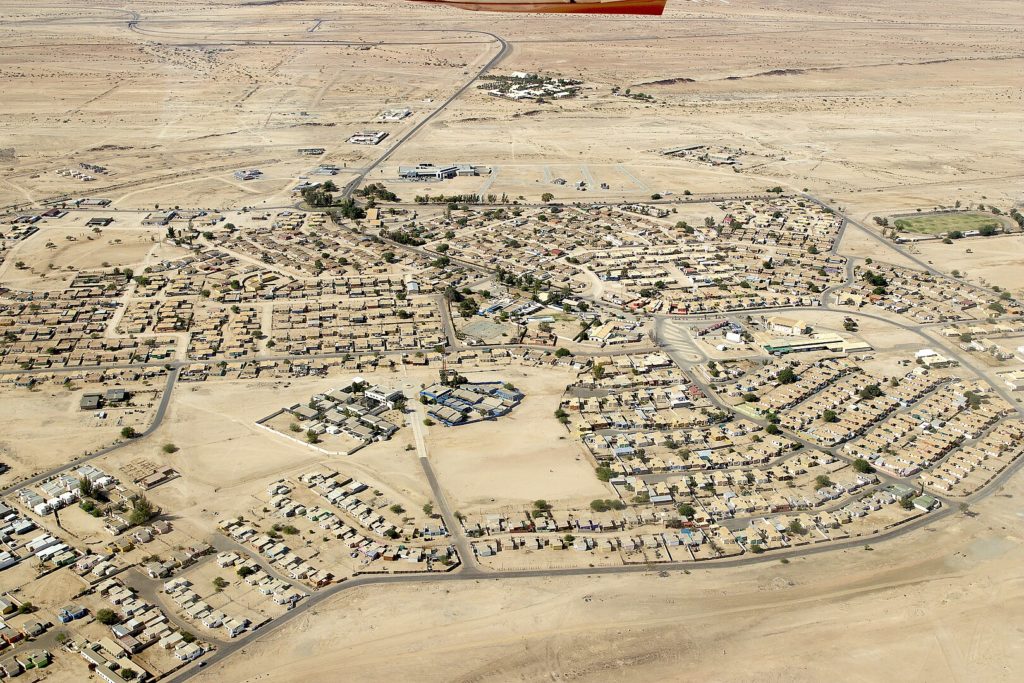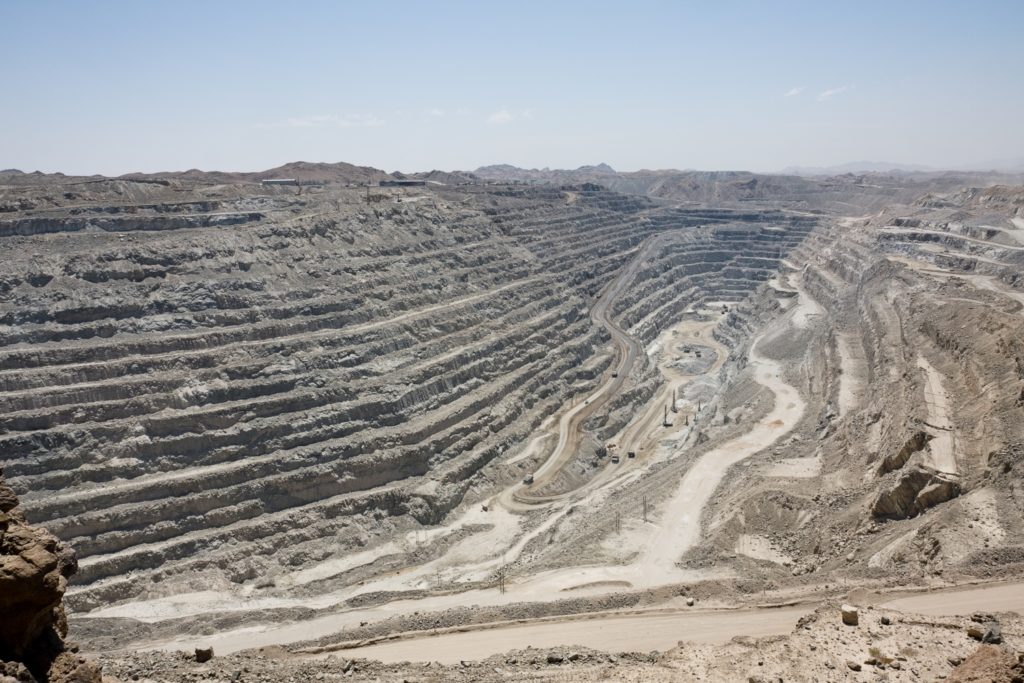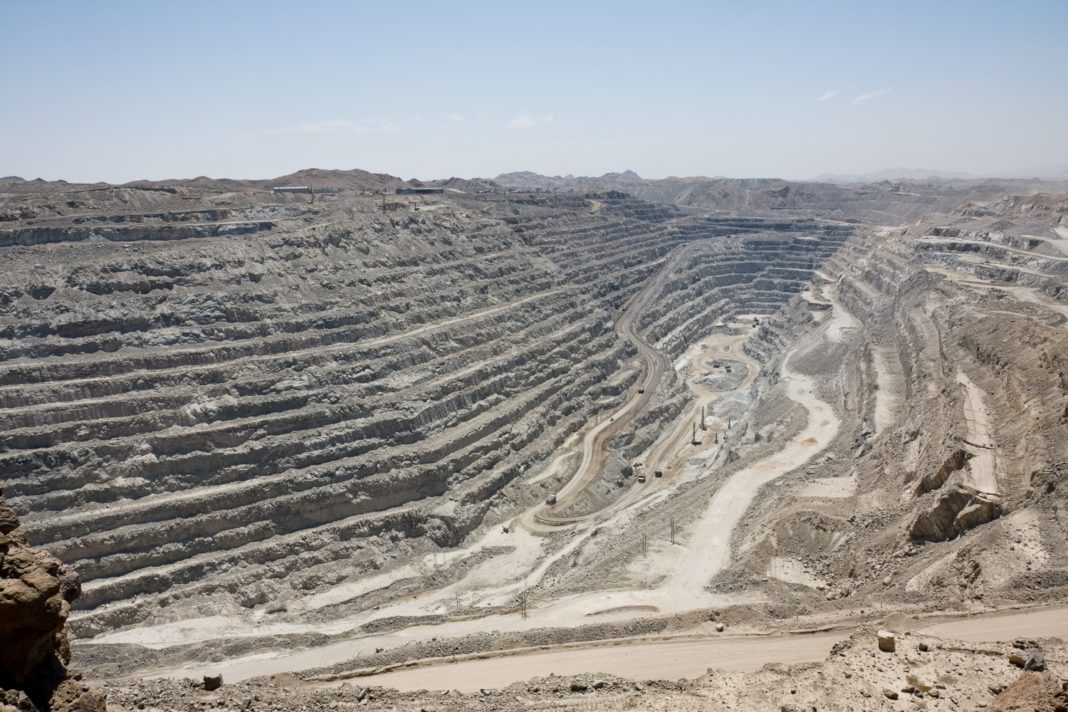The Rössing Uranium Mine in Namibia is the longest-running and one of the largest open-pit uranium mines in the world. It is located in the Namib Desert near the town of Arandis, 70 kilometers from the coastal town of Swakopmund.

Discovered in 1928, the Rössing mine started operations in 1976. In 2005, it produced 3,711 tons of uranium oxide, becoming the fifth-largest uranium mine with 8 percent of global output. Namibia is the world’s fourth-largest exporter of uranium.

Rössing is a low-grade ore body of a huge extent. Producing 1,000 tons of uranium oxide requires the processing of 3 million tons of ore, and in 2005 19.5 million tons of rock were mined and transported from the open pit to the processing plant. Of those, 12 million tons were uranium ore, which in turn required 226,276 tons of acid for processing into yellowcake, a powdered uranium concentrate that is the basis for nuclear reactor fuel.
Shares in the mine are owned 69% by the Rio Tinto Group which announced an agreement to sell its share to China National Uranium Corporation Limited on 26 November 2018, 15% by the Government of Iran (purchased in 1976), 10% by IDC of South Africa, 3% by the Government of Namibia (with 51% of voting rights), and 3% by local individual shareholders.
According to Wikipedia















